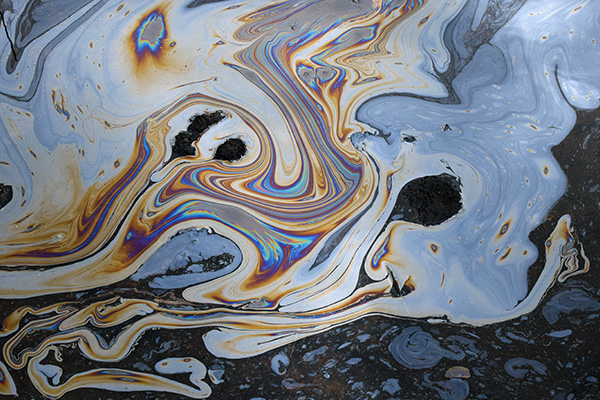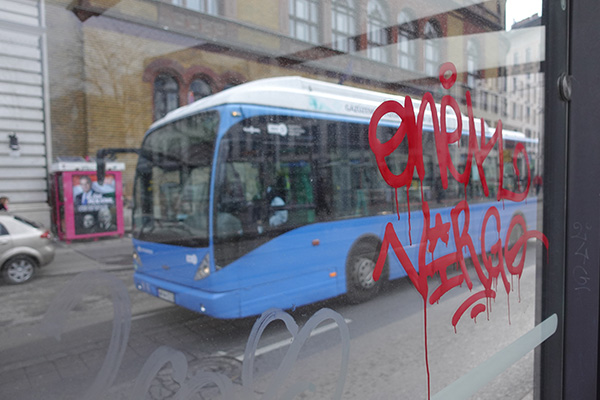Many warehouse floors are very smooth as they will see lots of traffic from Forklift Trucks, Tugs and tractors, which have little or no suspension, so a flat floor is vital to keep the loads stable and safe.
This equipment is normally heavily loaded and highly manoeuvrable in terms of being able to turn and manoeuvre in small and compact spaces, and this increases the level of friction where the tyre is in contact with the smooth floor.
Tyres for these vehicles are traditionally a standard black rubber, much like a standard car or truck tyre or a ‘non-marking’ tyre that is white or a light grey.
All types of tyres will leave a residue on the floor and the amount is determined by the speed of movement, turning and also braking and it is quite common the see specific areas in a warehouse covered in tyre marks at certain points such as the turning into an aisle or at a crossing/stop point for pedestrians.
Is a floor covered with Rubber tyre marks potentially dangerous?
The rubber itself is an inert material and poses no direct threat to health, but their presence on the floor poses a real and direct threat to safety!
Rubber tyre marks create the following risks in a warehouse or factory environment.
- They obscure warehouse safety lines and demarcation areas for pedestrians.
- They create a lack of grip between the tyre and the floor, especially if the floor is wet or damp through mechanical handling equipment coming in and out of the building in wet weather and pose a serious and real skid risk!
- They can create uneven surfaces and physical ridges on the surface of the floor which can jolt and unbalance pallets in extreme cases.
- They can obscure designated routes and paths and potentially cause confusion.
- Pedestrian areas become obscured and can lead to confusion and potential of pedestrians being in a ‘live’ area.
Why are rubber tyre marks so difficult to clean off warehouse floors?
Rubber is a naturally inert material, developed for its flexibility and hard-wearing capabilities it is a very resilient material. It is not dissolvable in water, nor can a standard floor cleaner surfactant.
A normal floor cleaner is designed to remove ‘soluble’ dirt and dust, by a simple method of dissolving and suspending the dirt particles in the solution. This solution is then held off the surface and when vacuumed through the scrubber dryer machine the tension or stickability of the solution to the floor is reduced so it can be more effectively vacuumed from the surface and into the scrubber dryer.
Rubber is very different as a standard floor cleaner surfactant will not dissolve the rubber and make it liquid and what happens is the floor cleaner machine is more likely to polish and harden the rubber tyre residues and increase the slipperiness of the surface.
Therefore you are left with the option of physically scraping the solid material or finding a way, that is safe!, to dissolve the rubber and turn it into a liquid.
How do you dissolve rubber tyre marks and make them liquid?
Many methods have been used historically to remove rubber tyre marks and range from the used of solvents to melt the rubber deposits to the more bizarre such as using soft drinks such as coke! (although this could leave a sticky mess and we have not seen this being effective …so it could be a myth!)
Solvent based solutions work by effectively and aggressively melting the rubber residues………….but due to their volatility the liquid solvent has a limited time to be in contact with the rubber before it evaporates.
They have very significant limitations and extreme safety issues.
Solvents are by nature highly volatile chemicals and a lot of their ‘energy’ is devoted to evaporation and therefore the fumes are highly flammable and potentially poisonous and the risk of a spark or ignition is high!
Very rarely will a Health & Safety Manager allow the use of solvents in a warehouse environment due to these risks!
Can rubber tyre marks be cleaned from a concrete warehouse floor?
Yes, there is a tried a tested method of cleaning rubber tyre marks caused by Forklift truck tyres off the warehouse concrete floor.
EN701 is a proprietary formulation from Bio8 Industrial Ltd that used a blend of low hazard components which specifically target rubber deposits.
It uses non-volatile, low hazard, but highly active combination of components to dissolve the rubber deposits and hold them in a liquid state. When the tyre marks are in a liquid state the rubber is in a form that can be effectively cleaned up using a scrubber dryer to leave a clean and safe floor and exposure warehouse floor line and safety markings, making them highly visible.
EN701 is a product that is best used neat and should always be pre-applied to floor surface and left to stay in contact varying from 5-30 minutes and can be agitated and worked into the surface using a scrubber dryer cleaning machine.
For more information on EN701, please click here.



